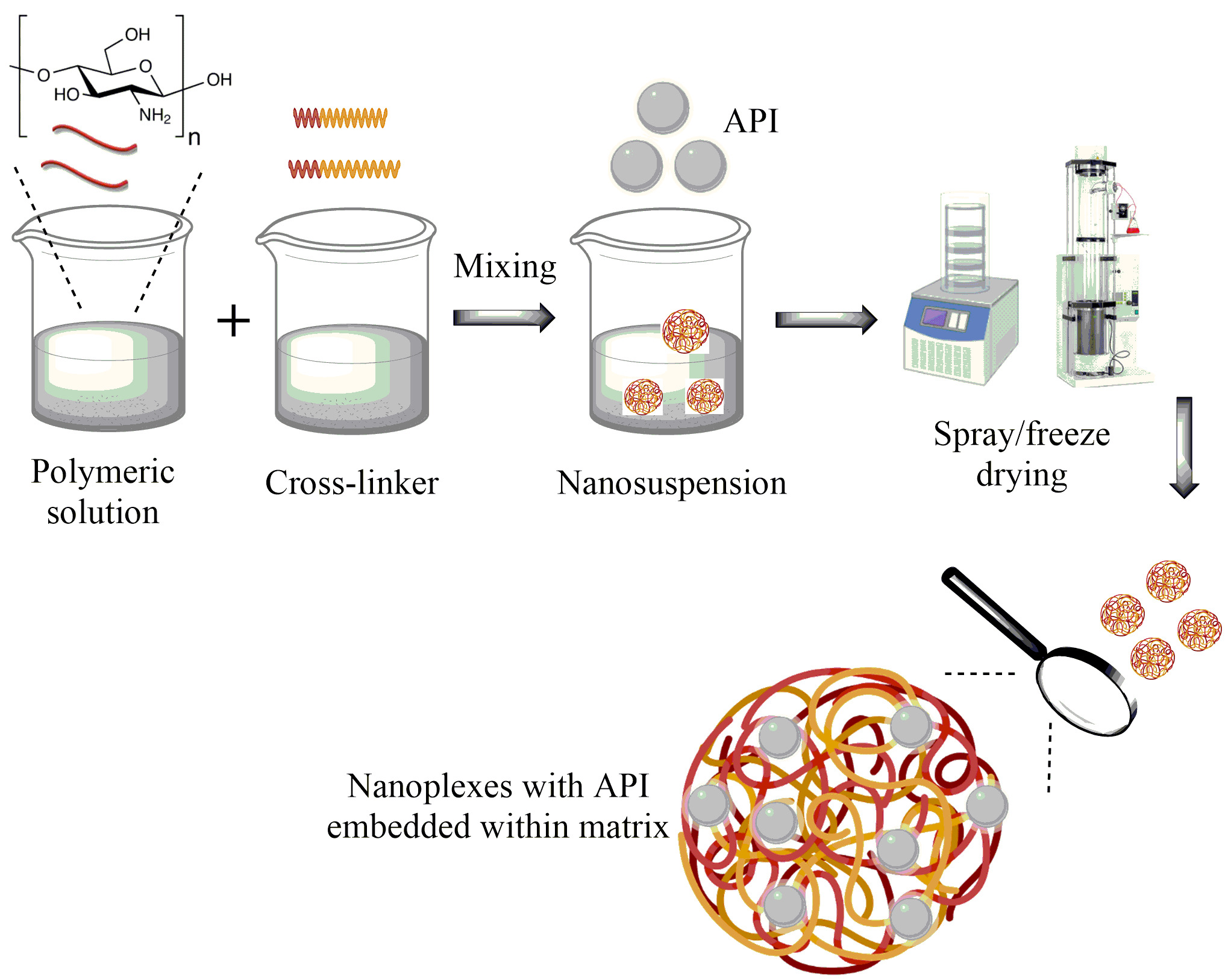SZTE Nanotechnological Research Group
Principal investigator: Dr. Rita Ambrus habil PhD
Nanocarriers: Development of nanoplex-based formulations

Natural polymers are extensively studied for their biocompatibility, however, their surface chemistry and charge can be exploited to obtain nanoplexes. Nanoplexes are the nano-dimensional cross-linked complexes obtained by the electrostatic interaction between the different polymers or; polymer and cross-linker [1]. Chitosan is the most widely used biopolymer known for its biodegradation. Nanoplexes can be easily synthesized by utilizing chitosan by the simplest ionic gelation method. Moreover, the nanoplexes can be loaded with an API during or after the cross-linking. In both cases, the API is embedded into the matrices of the nanoplexes allowing controlled release over time, following degradation of the polymer [2]. Nanoplexes are the latest drug delivery cargoes and can be designed as an ideal carrier for a variety of hydrophilic or hydrophobic drugs.
References:
1. Mukhtar, M., Pallagi, E., Csóka, I., Benke, E., Farkas, Á., Zeeshan, M., Burián, K., Kókai, D. and Ambrus, R., 2020. Aerodynamic properties and in silico deposition of isoniazid loaded chitosan/thiolated chitosan and hyaluronic acid hybrid nanoplex DPIs as a potential TB treatment. International Journal of Biological Macromolecules, 165, pp.3007-3019.
2. Dul, M., Paluch, K.J., Kelly, H., Healy, A.M., Sasse, A. and Tajber, L., 2015. Self-assembled carrageenan/protamine polyelectrolyte nanoplexes—Investigation of critical parameters governing their formation and characteristics. Carbohydrate polymers, 123, pp.339-349.

